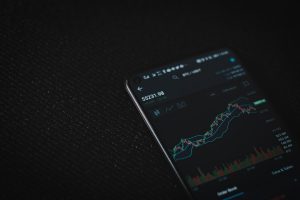The foreign exchange market, or forex, is a decentralized global market where currencies are traded. It is the largest and most liquid market in the world, with an estimated daily trading volume of $5.3 trillion. Forex trading has become increasingly popular in recent years, with traders from all over the world participating in the market. However, the forex market has experienced some significant changes over the years. In this article, we will explore what happened to the forex market and how it has evolved over time.
The forex market has been around for centuries, but it was not until the 1970s that it became a global market. Before that, most currencies were fixed to gold or the US dollar. However, the collapse of the Bretton Woods system in 1971 led to the adoption of a floating exchange rate system, which allowed currencies to be traded freely. This paved the way for the forex market to become what it is today.
In the early days of the forex market, trading was conducted over the phone or through brokers. This made it difficult for individual traders to participate in the market, as they had to go through a broker and pay high fees. However, the advent of the internet changed all that. Online forex trading platforms started to emerge in the late 1990s, making it easier for individual traders to access the market. This led to a surge in retail forex trading, as more and more people started to trade forex from the comfort of their own homes.
The forex market has also become more accessible in terms of the range of currencies that can be traded. In the early days, only a few major currencies were traded, such as the US dollar, the euro, and the Japanese yen. However, as the market evolved, more and more currencies were added, including emerging market currencies such as the Chinese yuan and the Brazilian real. Today, traders can trade over 180 different currencies in the forex market.
Another significant change in the forex market has been the rise of algorithmic trading. Algorithmic trading, also known as automated trading, involves the use of computer programs to execute trades. This has become increasingly popular in the forex market, as it allows traders to execute trades quickly and efficiently. Algorithmic trading has also led to the development of high-frequency trading, where traders use complex algorithms to trade large volumes of currencies in a matter of seconds.
The forex market has also become more regulated in recent years. This is partly due to the increase in retail forex trading, which has led to concerns about the protection of individual traders. Many countries now have strict regulations in place to govern forex trading, including minimum capital requirements and strict rules on leverage. This has helped to protect traders from fraud and other unethical practices.
In conclusion, the forex market has undergone significant changes over the years. From its humble beginnings as a small market for a few major currencies, it has evolved into a global market with over 180 currencies traded. The rise of the internet and online trading platforms has made forex trading more accessible to individual traders, while the advent of algorithmic trading has made it more efficient. The regulatory environment has also become more stringent, which has helped to protect traders from fraud and other unethical practices. Despite these changes, the forex market remains a dynamic and exciting market for traders of all levels of experience.





